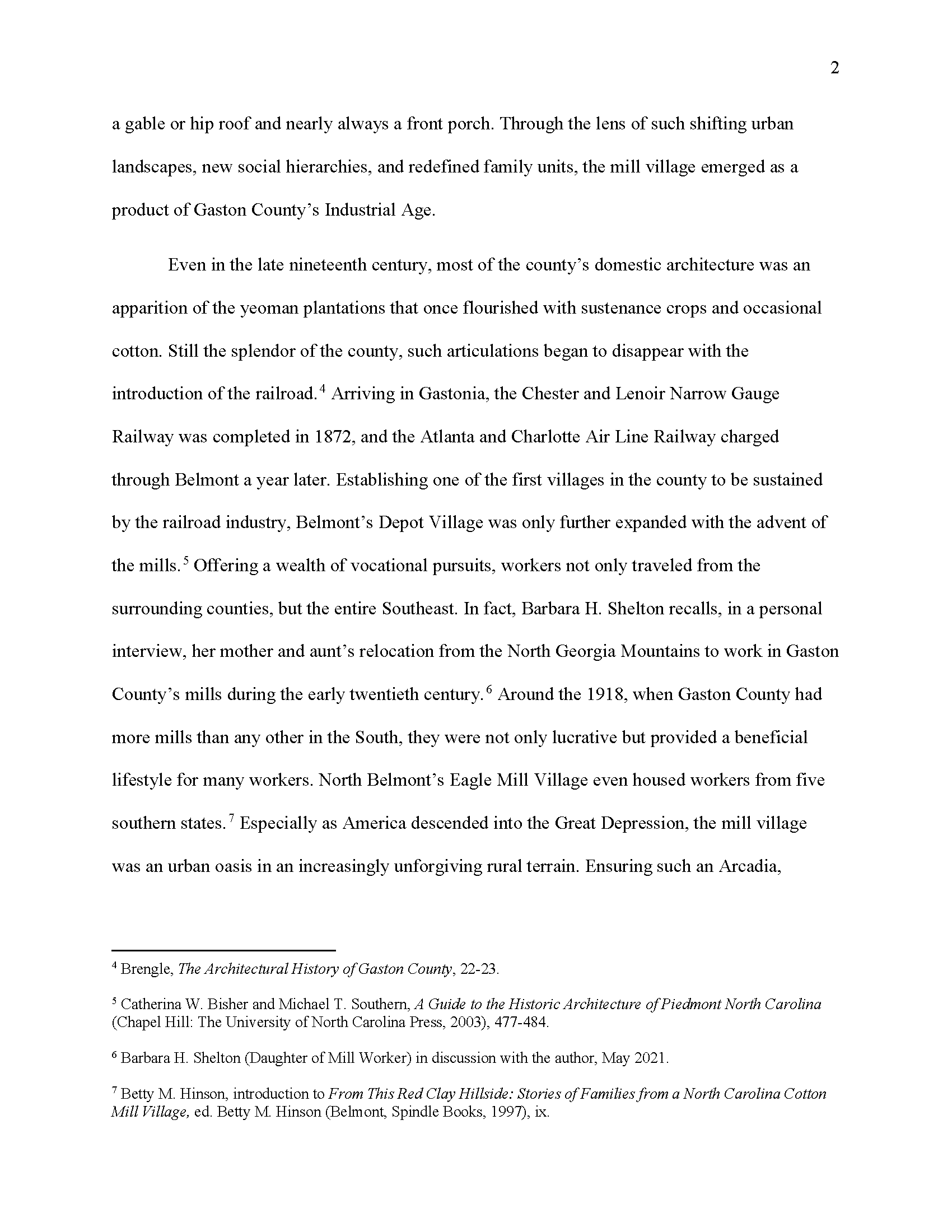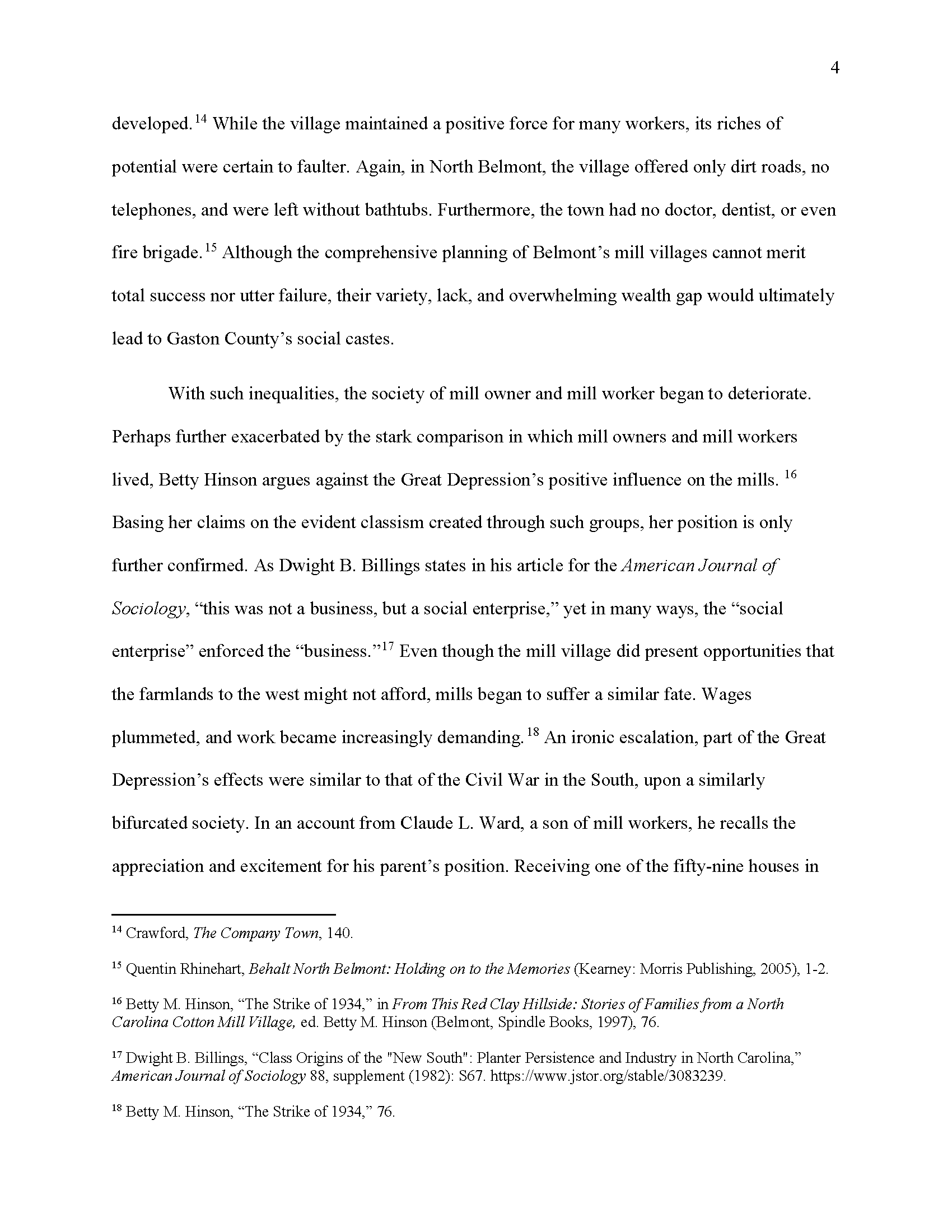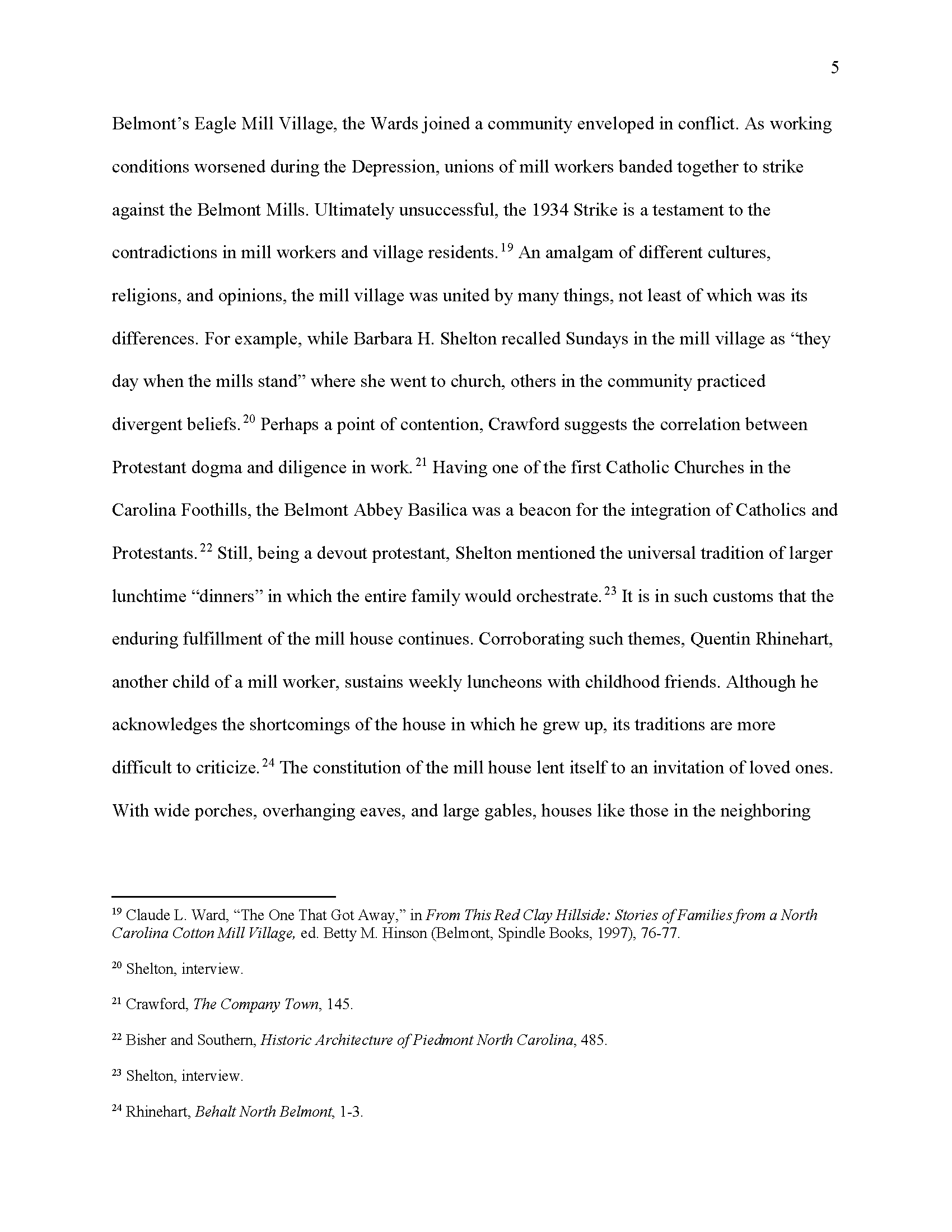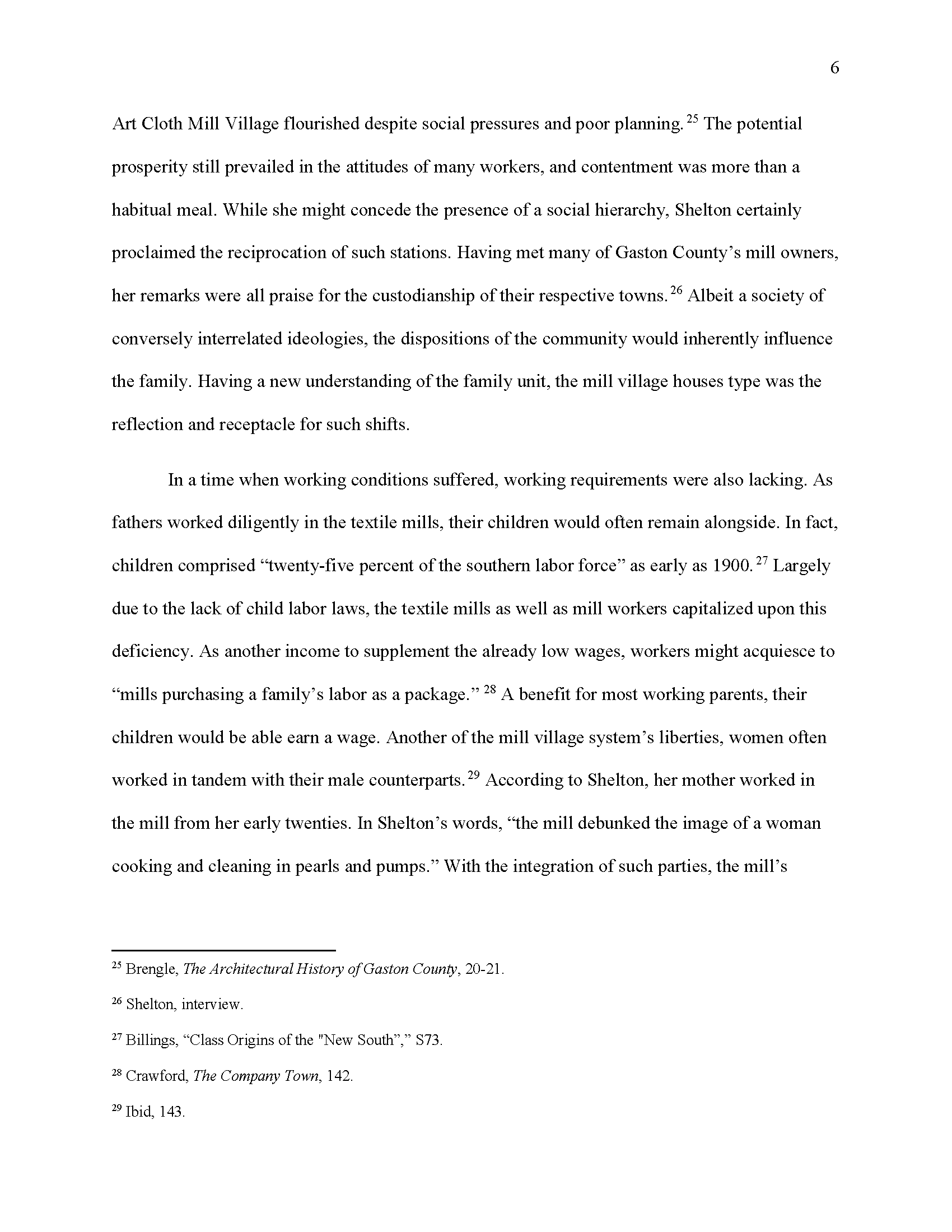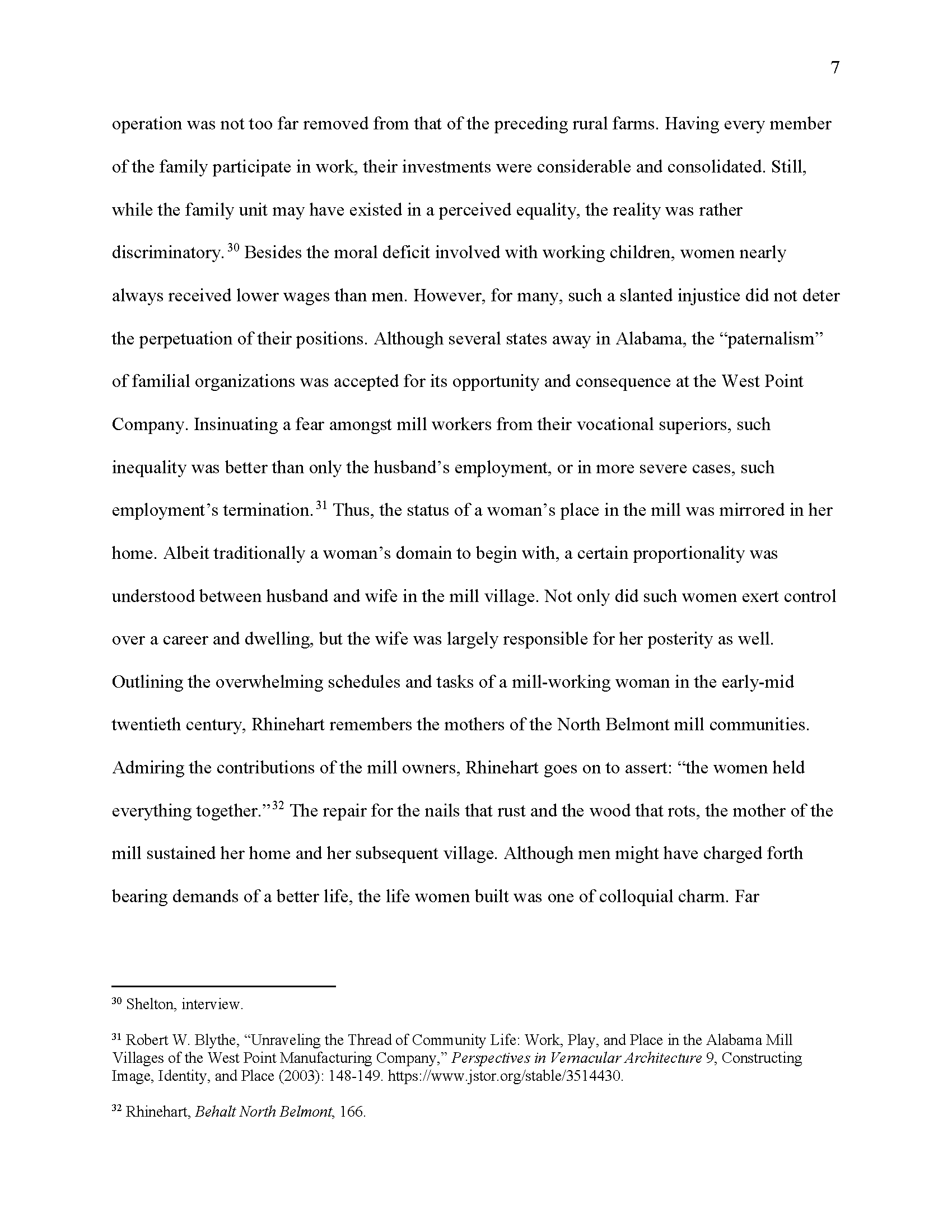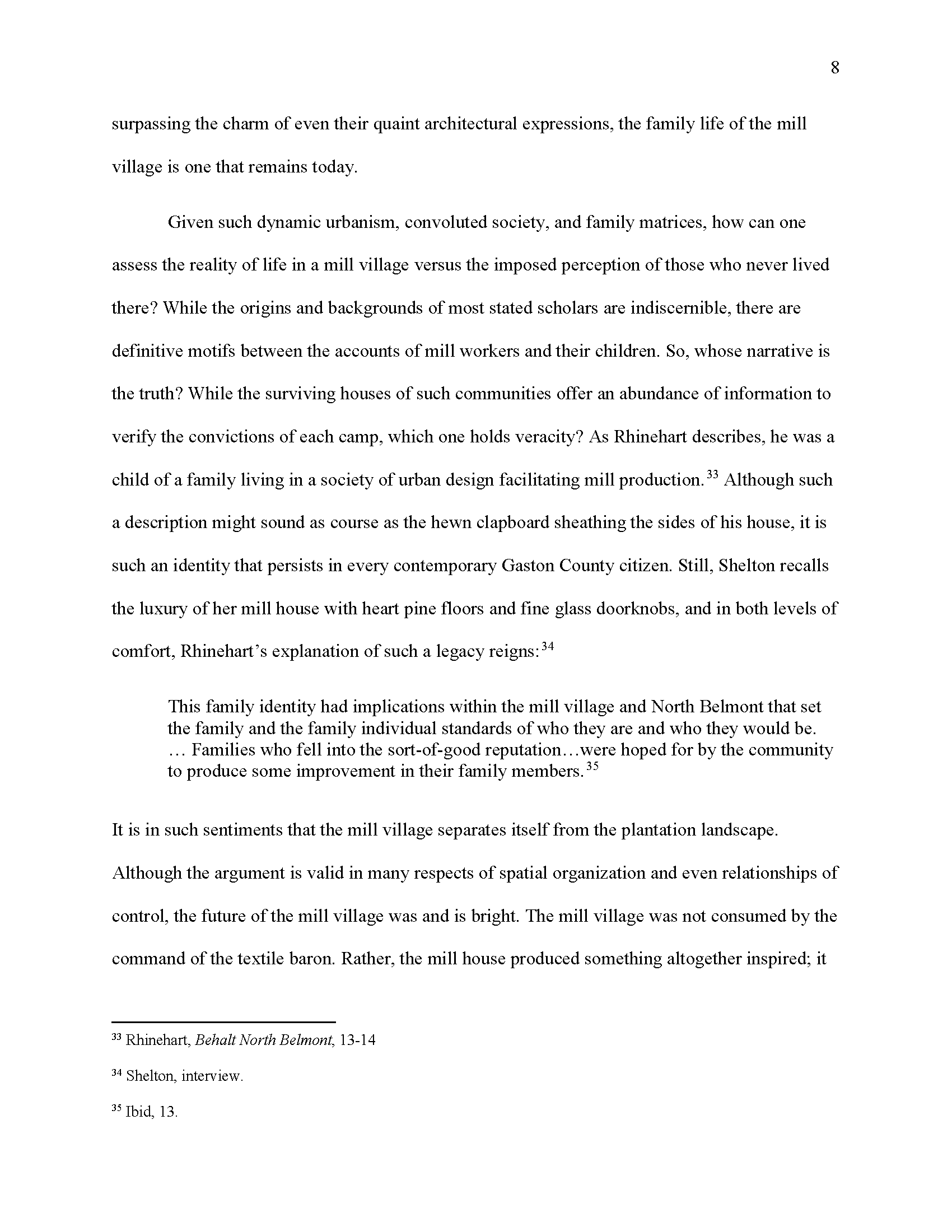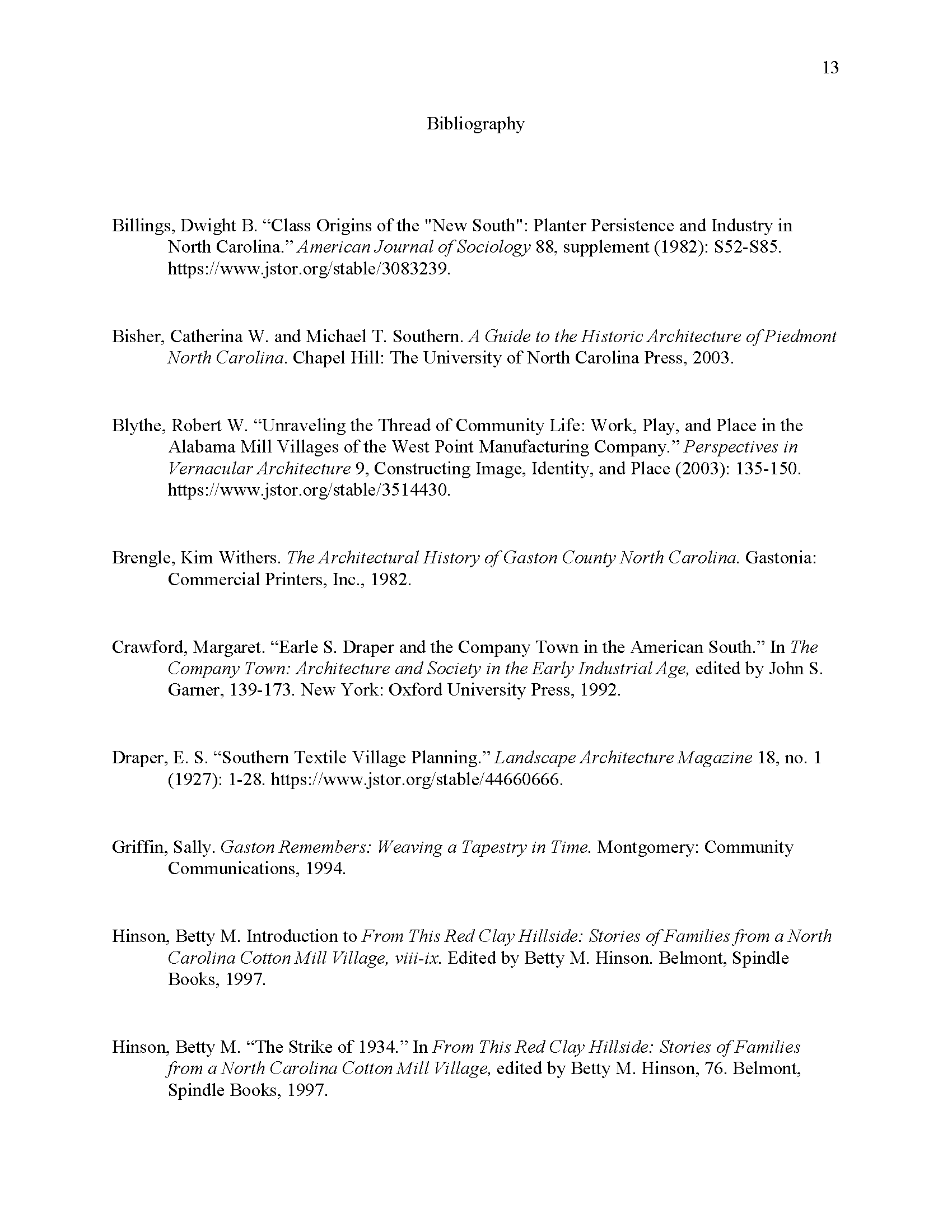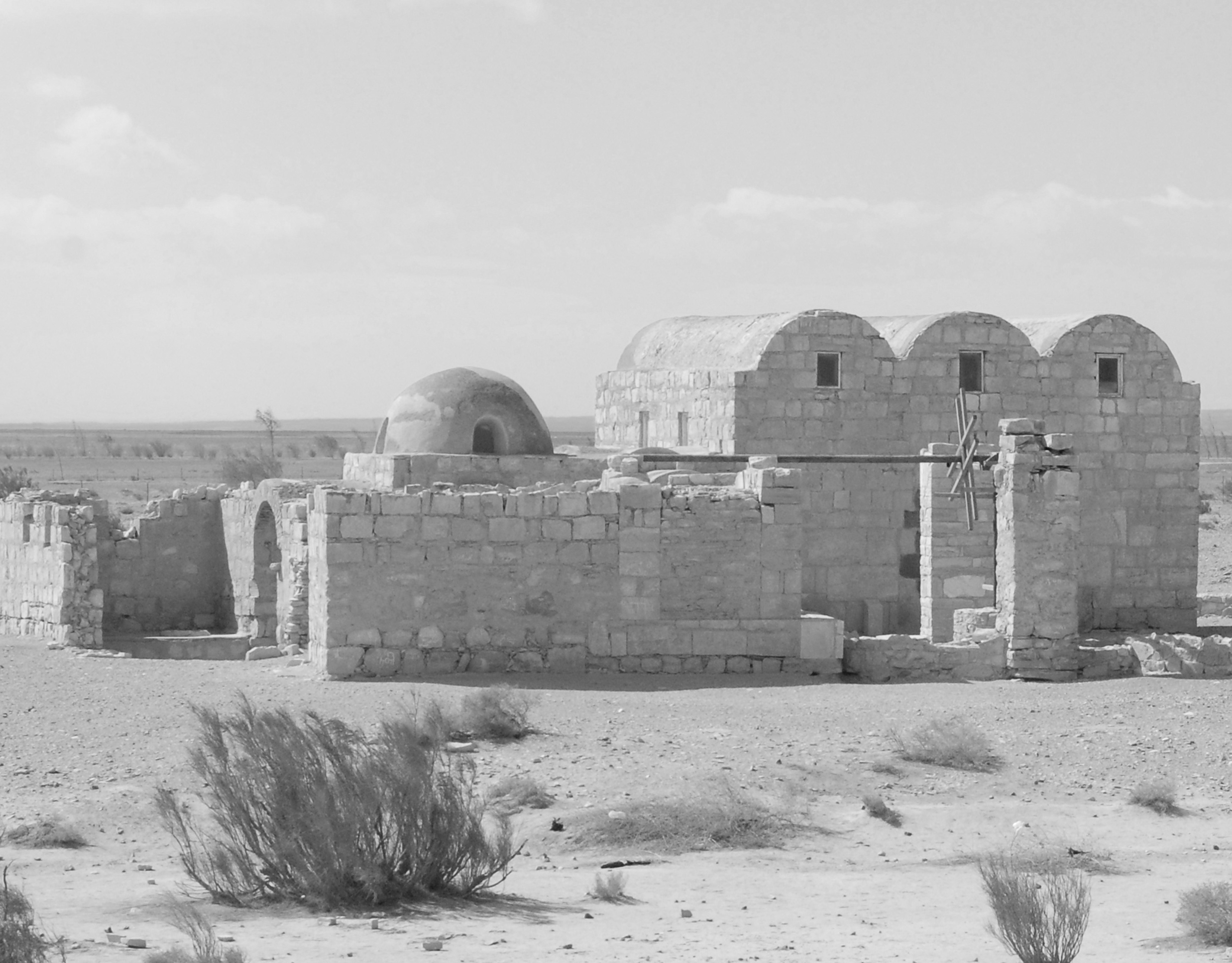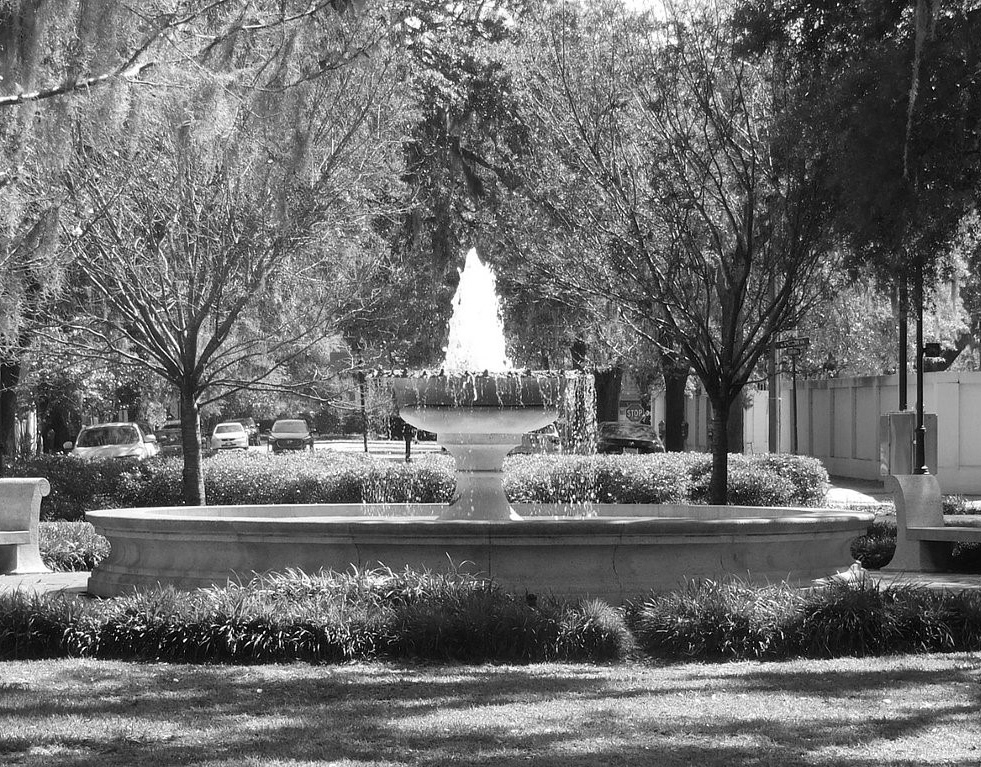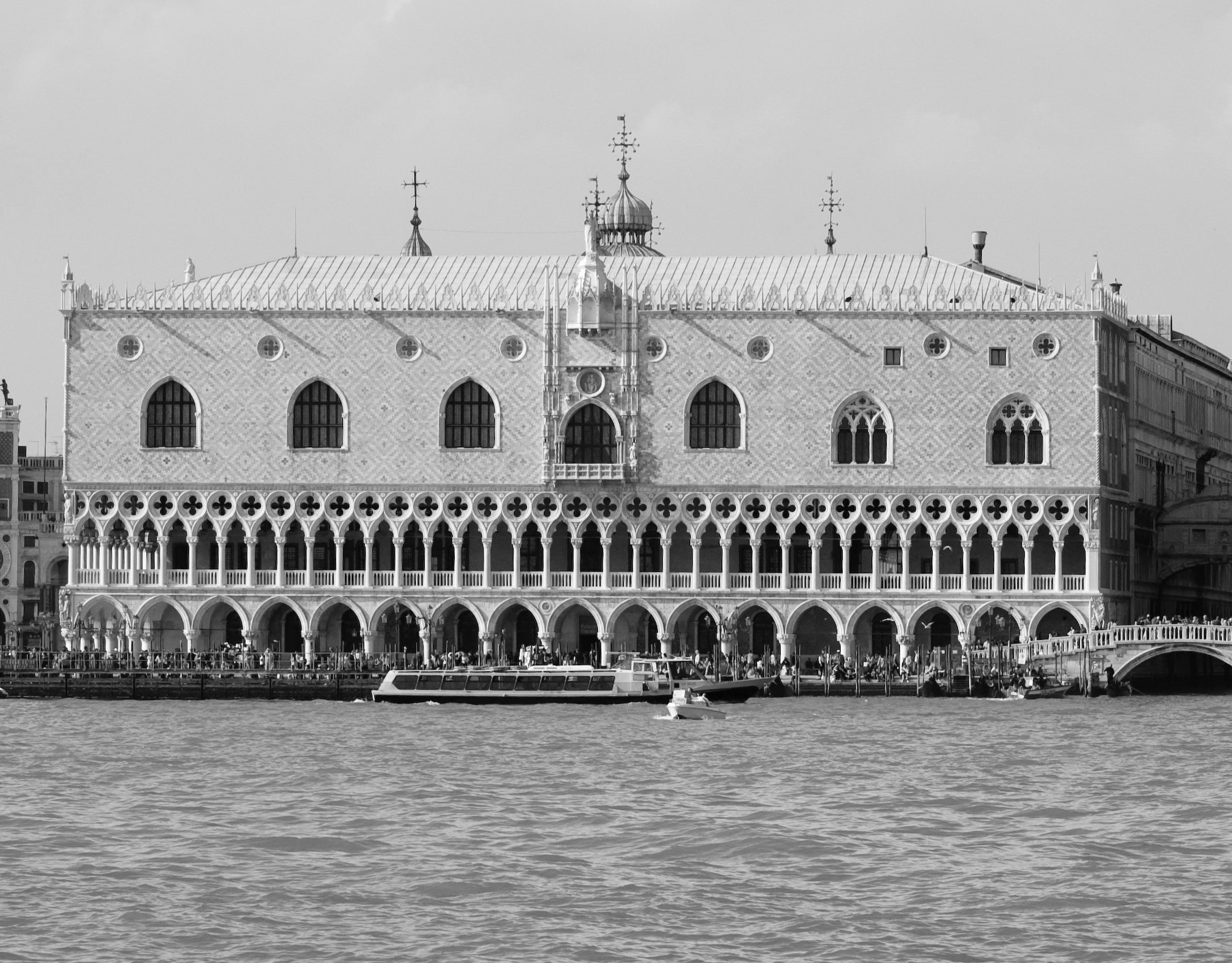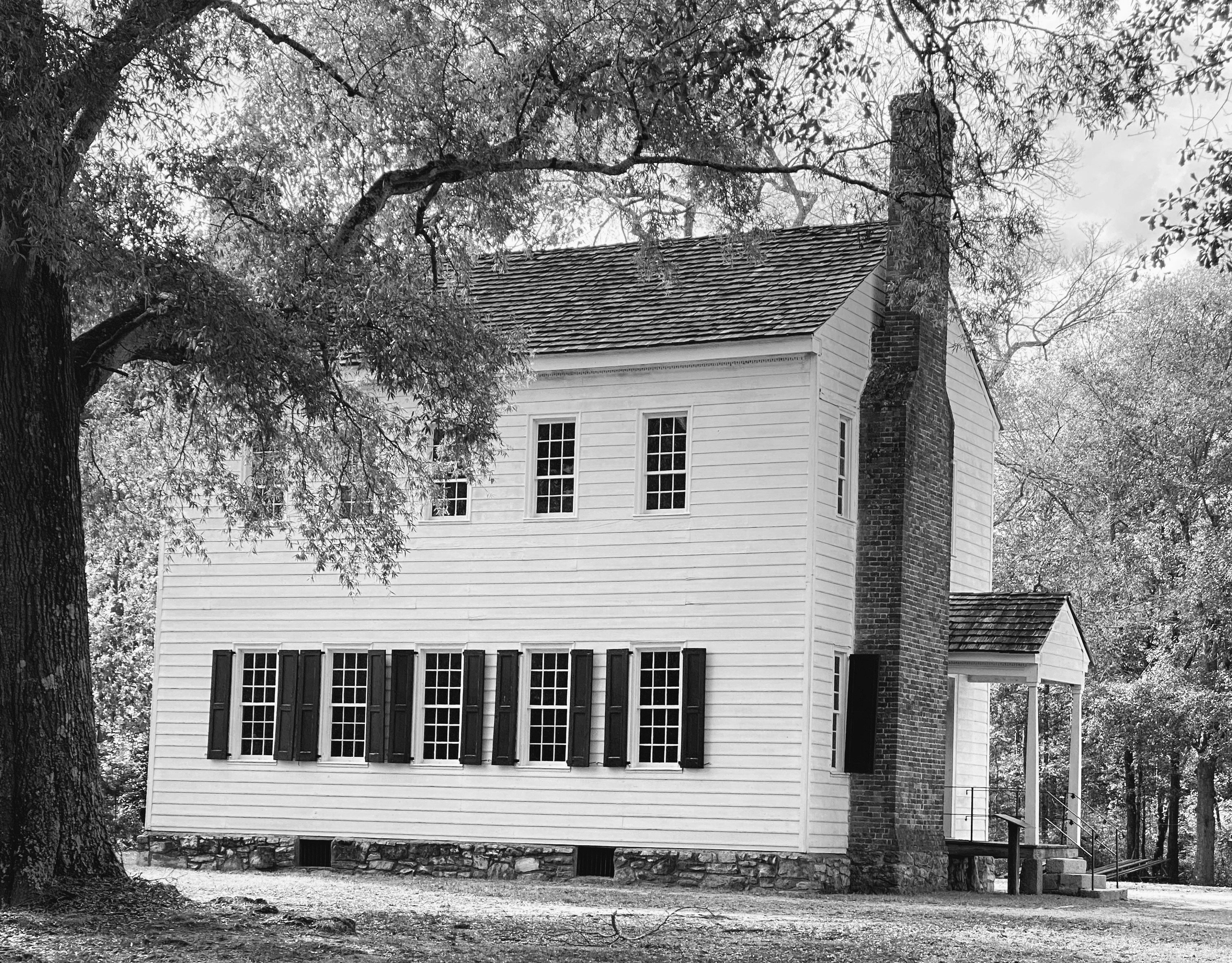"Art Cloth Mill Village" From The Architectural Heritage of Gaston County by Kim Withers Brengle
From Cotton Fields to Spinning Mills: The Perception and Reality of North Carolina's Textile Industry through Vernacular Villages was written in Dillon's World Vernacular Architecture Seminar. With a rich history surrounding the North Carolina Piedmont, its architectural heritage is both obviously saturated and surprisingly staid. Occurring just west of Charlotte, Gaston County’s historic fabric stretches as far back as the mid eighteenth century. The following decades reflect a crude disposition towards building and a growing pursuit of the identity. Later, capitalizing on the flowing rivers around Belmont’s American Mesopotamia, a textile mill named after the Catawba River’s geographical phenomena was built in 1848. Spinning yarns and threads, the Mountain Island Mill only preceded the Woodlawn Textile Mill and the Stowe Factory by two years. Although the architecture of such mills was defined by red brick construction, Gaston County’s Antebellum period was a body of log structures along with a sparse collection of clapboard dwellings. This timber tendency continued to persist through the mid twentieth century. It is during this time when such materials experienced a renaissance in sequestered villages surrounding the textile mills of Belmont. A house type provided by the textile barons such cities, the opportunity of the mill’s employment yielded much more than a wage and lodging. Through the lens of such shifting urban landscapes, new social hierarchies, and redefined family units, the mill village emerged as a product of Gaston County’s Industrial Age. Please scroll down to the final paper, From Cotton Fields to Spinning Mills: The Perception and Reality of North Carolina's Textile Industry through Vernacular Villages.
THe Perception and Reality of North Carolina's Textile Insdustry


